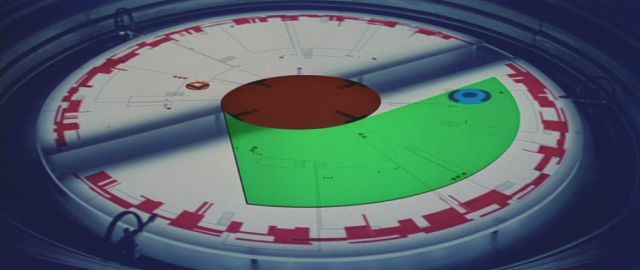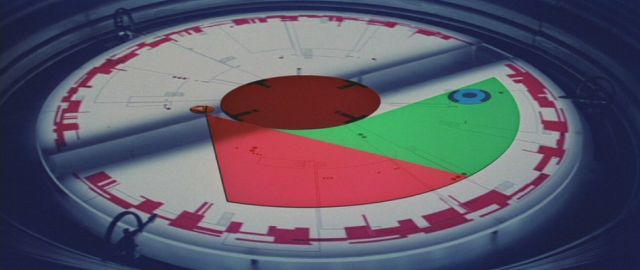Destructionator XIII wrote:If you can redo it correctly, that'd be fantastic. I'd love an accurate measurement for both of them.
Well, to be honest, there is so much wiggle room in how you calculated that, that its possible to reach almost any number you want with the method you used - if it is what I think it is (Wikipedia calls it the intercept theorem).
Just to make sure, heres the picture that describes it:

You tried to calculate C = B*D/A using the following picture:

Looking at the distance between the X-Wing and the Death Star, the numbers you conclude are:
D is obviously correct at 160.000 meters.
You estimated B as the length of the X-Wing at about 13 meters. This is pretty close to other numbers out there.
However, you guesstimated the tip of the nose (which is as wide as the Death Star in the background) as about 2m wide, so A=2. Looking at other picture/schematics, the nose is maybe best 1/10 the width of the X-Wing, which is about 12 meters. This would make A=1.2. If you had taken that value instead, C would have been 40% smaller.
Because A is such a small number, small differences in the estimate can produce huge differences in the end result, as the differences in A are carried over proportionally. And even with the 40% wiggle room, this method still delivers obviously ridiculous numbers.
This is especially relevant with how you calculated the distance between the fighters and Yavin.
You used the following image as the basis for your calculation:

This then gets very confusing. Again, C= B*D/A
You estimate B, the length to the end of the X-Wing in the foreground as about 14 - a tiny bit more than the length of the X-Wing. This is a very, very rough estimate, that could easily be doubled, after all, the camera has a narrow vision. If the camera really was just 2 meters off the front of the X-Wing, it would dominate most of the view. This means there is a huge uncertainty in your figure.
You (bizarrely) decide to use the 25 pixel width between the engines of the X-Wing as the basis for your calculation, estimating that length to be about 2 meters. Since the X-Wing is about as wide as it is long (maybe 10% or so difference), and the X-Wing is about 220 pixel wide, those 25 pixels are more in the range of about 1.3 meters.
You use this to somehow get 92.7 and somehow get a factor of 8.6e6 for D/A. I have no idea where these numbers come from. If I simply use half the X-Wing (which is also about 110 pixels wide) with a width of 6 meters for A, then use 10,200,000 meters for D, I get a value of 23,800 km for C.
All these results seem quite weird, and can easily be manipulated.
Lets try a better method. We know Yavin is a gas giant with a moon that is apparently close to Earth in size (I don't think the size of Yavin is mentioned anywhere directly). Lets be conservative and say that Yavin is about the size of Jupiter, a diameter of about 150,000 km.
Taking a look at Mike's site, we have the following pictures:
15 minutes before being in firing range (the time at which the rebel fighters were launched):

5 minutes before being in firing range (at which point rebel fighters have already been fighting at the Death Star for some time, the Y-Wings have just started their attack run):

Now, I don't think measuring pixels is apt here, since starting with the known size of the Death Star, Yavin would only have a diameter of about 1000km. What we can use these images for is the relative positioning of the Death Star and Yavin 4, as this is updated and fits the situation when the Death Star is in firing range.
Apparently, when the fighters arrived at the Death Star, it was almost completely opposite Yavin 4. Taking simply half a circle with a diameter of 150,000km, we have a distance of about 240,000 km. The actual distance traveled is likely far larger, since they started from a moon orbiting Yavin. Considering the orbit of moons in our solar system, this can easily add 100,000 km or (a lot) more to the total distance traveled.
So, we can very, very conservatively say, that they traveled at least 240,000 km in less than 10 minutes. Using 240.000km and 10 minutes as an extreme low end (again, with starting and ending speed of 0), that is an acceleration of at the very least 2666m/s², or about 270g.







